How I organized photo storage
Hi Habr! Each of us stores some information, some use secrets and life hacks for this. Personally, I like to press the button of the photo gun and today I would like to share my experience of storing information that I went to and went to.
I’ll warn you right away: under the cut there is no “silver bullet” that will multiply by 0 the chaos problem in the files on your devices. And not even a single line about the neural network, recognition of anything by anyone, or other nanotechnologies. Under the cut - there is a bit of text and an oak plate, which also has to be filled in manually =) But which works.
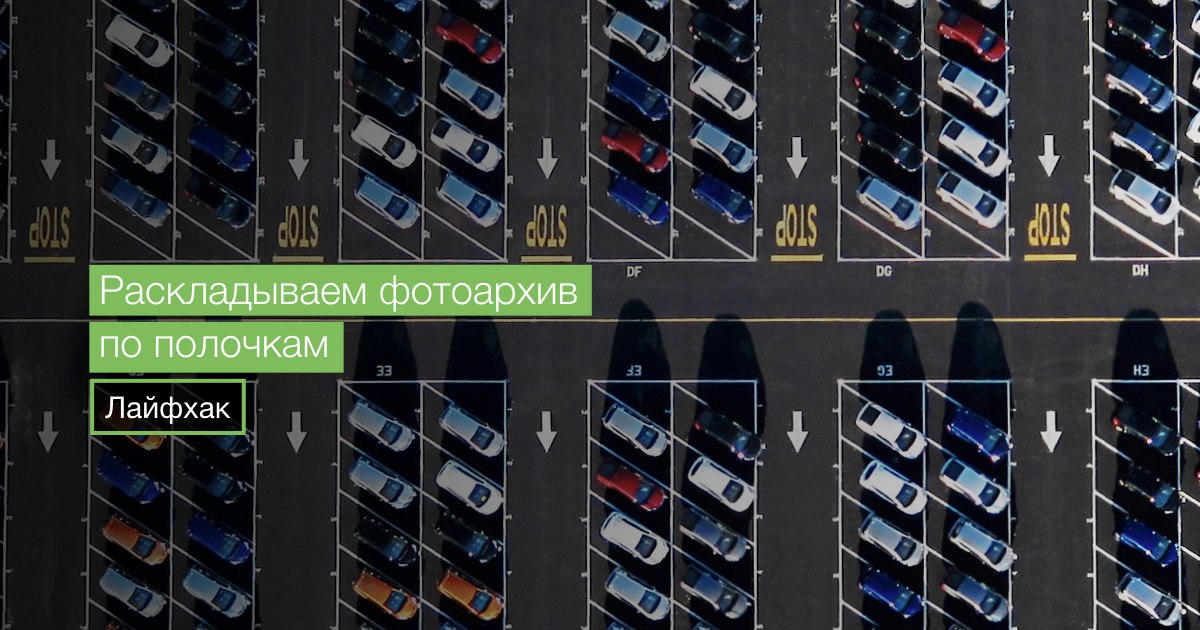
Before I understand what kind of problem I wanted to solve, let's briefly talk about it =) I do not consider myself a direct photographer, photographer, but still:
Now a little more detailed.
I use 1-2 memory cards of 64 GB each (not the ones in the photo below, although I know that they have already come into view)) - buying a more voluminous card (128-256) is stifled by a toad. Not even so much a toad as an attitude to the card as to some kind of consumable with which a fiasco can happen at any moment: I lost the cards, bent it, and once it was stupidly stolen directly from the camera. And “all eggs in one basket” is not the most far-sighted approach.
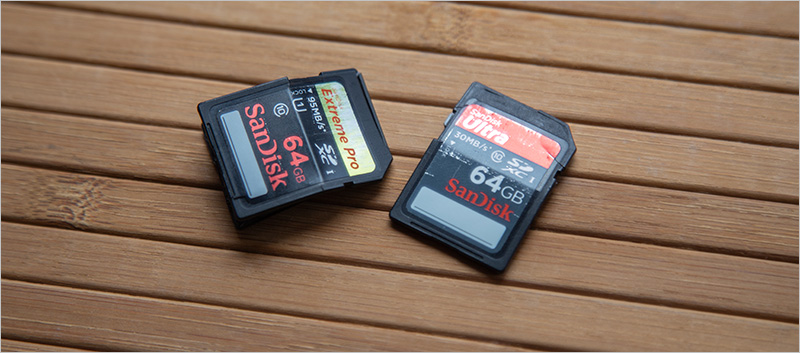
This is what happens when I forgot to remove the card from the laptop, put it on the passenger seat and braked sharply. And on this rake - twice.
64 GB is somewhere in the 2000-2500 photographs in graves. In my case, these are 4-6 event photosets or about 10 "gadget" ones. Check out my previous posts and see why so many. Someone will say “why torment the shutter button like that” and be right, but I wrote above that I'm a little noob. Moreover, I have the addiction to do two frames each - if the first turns out blurry, then perhaps the second will come to the rescue. I have it at the instinct level and so far I can not do anything about it. This is the answer to the question “why am I taking pictures in the ravine” - yes, it’s corny in order to correct my own shoals later on, all sorts of overexposures, oversights and other geometries.

For a long time, I could not find a program that would help me fully cover my data storage needs. There are catalogers, there is convenient work with meta tags, with face recognition and drawing photos on a map - a whole wagon of cool features, but ... scattered across different applications. I’ll list a few pitfalls that almost all applications stumbled on.
Problem number 1: here lies a memory card - what's on it? You never know. Of course, you can scroll 2000 photos on the camera, insert them into a laptop or take notes on a smartphone, but this will not give a “big picture”. And it won’t answer the question “ Have I already made a backup of this data or can it be deleted permanently? "If, for example, an urgent need to make room? After all, free 64 GB may not be at hand.
Problem number 2: you never know what the state of the photograph is. Sorted? Processed? Can I delete or first throw it on the computer? Do you know these endless folders “From SD”, “SD64 LAST”, “! UNSORTED”, “2018 ALL”, “iPhone_before_update” and so on? =) On a laptop, on a memory card, on an external drive, with a bunch of repetitions? And this is a depressing feeling, “ we need to put things in order in all this - there will be free days off ... ”. And there is no free weekend and no.
Problem 3: how do you quickly find the right photos? For example, recently I needed to make a collage of all the "first September" for several years. Store on a laptop? It does not fit. Wool on different drives? Well, as an option. But is it inconvenient? ..
I will be very grateful if you tell me a more functional and flexible option than the one that I invented by trial and error for myself (below). I repeat that we are not talking about the viewer / sorter of photos, namely about convenience / visualization / informational content.
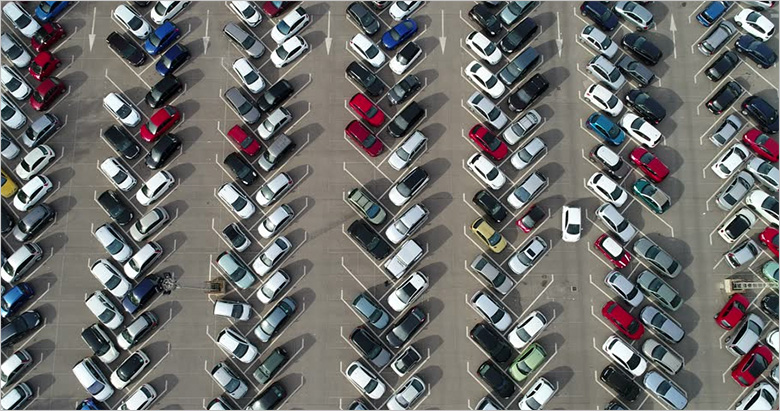
I decided to use such a cool tool as tables in GoogleDocs =) It is free, cross-platform and tede - I think it needs no introduction. Before compiling the frame of the tablet, I tried to understand what fields I needed. You can think of at least a hundred of them, but you need to make sure that they are convenient to use and not annoyed to fill out each time. Well, try to take into account further scaling: to make it convenient to use the plate in a year, two or three.
I stopped my thoughts on the following set of fields:
Clickable:

Actually, such a tablet came out from me =) Pretty massive, but I made it for myself. If you liked my train of thought, then grab and adapt to your needs, add-remove.
Optionally, you can summarize the weight of all photosets, and count% of the occupied space on the media of a known capacity (a kind of progress bar).
Speaking of media.
At first, I only stored files on the laptop, but the place quickly ran out. I bought an external disk for 2.5 "- it died relatively soon due to my fault, since I constantly carried it with me in my backpack and once I didn’t save it.
I decided to try Ya.Disk, I bought 1TB - it seems to be convenient in general, but at the same time a lot of inconvenient: download and download speed, cost, privacy (all of a sudden a beta version of the new algorithm will consider my photos invalid and erase the whole account?) and much more.
Therefore, in the end, I settled on the version of symbiosis: I took two stationary disks and left the subscription in Ya.Disk active as a transit point and a spare wheel. Those “insensitive” data that could potentially be needed in the very near future fly away into the cloud - for example, photos of a device to be written about, or photos from children's events that are to be shared with other parents (the presence of a DSLR automatically dooms you to this function in kindergarten and school). On disks - everything that has no place in the cloud.
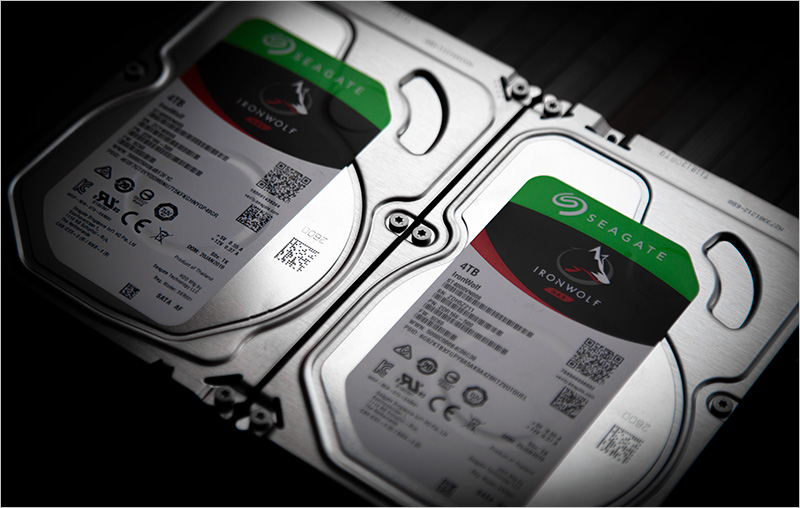
He took two 3.5 "Seagate Ironwolf as a stationary drive at the beginning of the year - a series of disos specifically for NAS-s. In this line there are models from 1 to 14 TB - 1 and 2 TB are not serious, for 6 and more - a little expensive. I stopped on the model 4 TB each - at first I thought I would make 8 TB JBOD of them, but then I figured it out and realized that I hadn’t done so much = yet) and finally stuck it together in raid 1 so that I wouldn’t bite my elbows for sure. little noise, do not heat up much, with a speed of more than ok (although I didn’t even make accurate measurements).
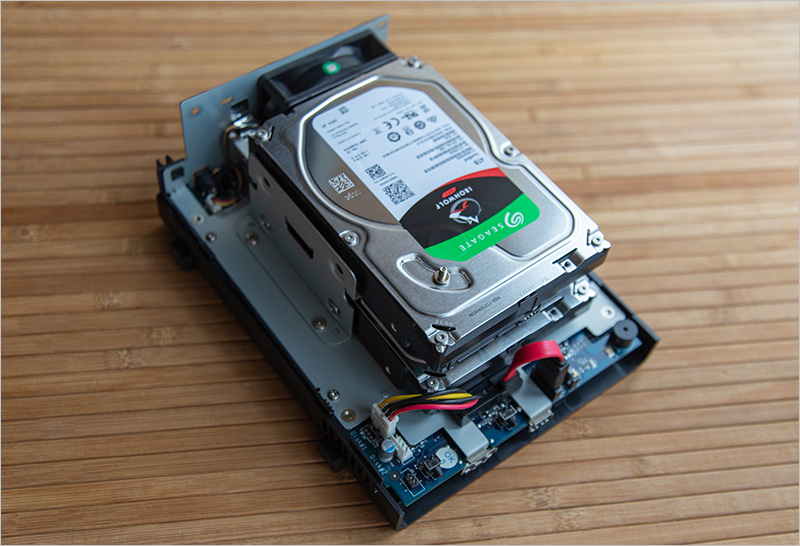
1TB on Ya.Disk costs 2000 ₽ per year, that is, 4 TB will cost an annual 8K (life hack: if you have a Y. Plus subscription for 1500 a year, there will be a 30% discount on Y. Disk), from the pluses you can add a place to a couple of clicks. 4 TB Seagate Ironwolf cost 7K apiece (I managed to grab 6 each ), but then you bought them once, put them in and forgot - they can autonomously rustle somewhere in the closet and not ask for money with an interval of a year.

For the sake of interest, I looked at the rates at Cloud@mail.ru - 1 TB costs from 699 ₽ per month! ) That is 8400 per year. 4 TB - from 2690 ₽ per month (32K per year).
I still have enough 4 TB for photos with my head, but if you are editing a video, then there will be few. In general, consider it yourself for your tasks =)
An important point that should be taken into account in the calculations. Recently, I talked with two wedding photographers - they said that they are trying to send a photo to the client within a month (this is already with retouching). Then they store the photos for a couple of months, and then mercilessly delete them, leaving only a couple of photos for the portfolio from each photoset (and the source for them, in case someone has to prove something, both of them happened). At first I thought about this approach: “Hmm, maybe well, what the hell ?! After all, the truth is, why keep all these photos of other people's weddings and gadgets if you will never watch them? ". Wait for the magic " what if they come in handy "? If in the last year you did not have such an attraction, then believe me, it will not come in handy. But then I thought that there is still a difference between my own and someone else’s - yes, you won’t see family photos and videos now, but it will be very nice to see them in 5-10-15 years. And here you understand that it is better to stock up on free space.
I use Chrome and it has a convenient bookmarks bar (CMD + Shift + B). Create a bookmark of the table with the files, rename it - give the name:

(uh, Habr does not support emoji, I had to insert a picture). If there are a lot of bookmarks, you can do it with a separator, I like this one - “⬝”. With it we get such a beauty:

I have been using this tablet for about six months now and in general I like everything about it, I'm already used to filling it out while the files are copied. Therefore, I propose not to waste time trying to convince me =) But at the same time, I understand that she is from the Stone Age and in it, it is possible (but not possible, but sure!) There is much to improve or automate (for which need more knowledge and time). Collective mind, let's think together, how can this be improved / redone / optimized, achieving better results with a minimum of effort? Any suggestions are welcome.
Well, or maybe you have your own secrets ofdodging file storage - share it.
I hope it was useful =) Good luck!

Intro
Before I understand what kind of problem I wanted to solve, let's briefly talk about it =) I do not consider myself a direct photographer, photographer, but still:
- I have photo guns and take photos in RAW (each photo weighs an average of 20-25 MB)
- I had a question of storage and structuring of photos (or rather their source)
Now a little more detailed.
I use 1-2 memory cards of 64 GB each (not the ones in the photo below, although I know that they have already come into view)) - buying a more voluminous card (128-256) is stifled by a toad. Not even so much a toad as an attitude to the card as to some kind of consumable with which a fiasco can happen at any moment: I lost the cards, bent it, and once it was stupidly stolen directly from the camera. And “all eggs in one basket” is not the most far-sighted approach.

This is what happens when I forgot to remove the card from the laptop, put it on the passenger seat and braked sharply. And on this rake - twice.
64 GB is somewhere in the 2000-2500 photographs in graves. In my case, these are 4-6 event photosets or about 10 "gadget" ones. Check out my previous posts and see why so many. Someone will say “why torment the shutter button like that” and be right, but I wrote above that I'm a little noob. Moreover, I have the addiction to do two frames each - if the first turns out blurry, then perhaps the second will come to the rescue. I have it at the instinct level and so far I can not do anything about it. This is the answer to the question “why am I taking pictures in the ravine” - yes, it’s corny in order to correct my own shoals later on, all sorts of overexposures, oversights and other geometries.

Problem
For a long time, I could not find a program that would help me fully cover my data storage needs. There are catalogers, there is convenient work with meta tags, with face recognition and drawing photos on a map - a whole wagon of cool features, but ... scattered across different applications. I’ll list a few pitfalls that almost all applications stumbled on.
Problem number 1: here lies a memory card - what's on it? You never know. Of course, you can scroll 2000 photos on the camera, insert them into a laptop or take notes on a smartphone, but this will not give a “big picture”. And it won’t answer the question “ Have I already made a backup of this data or can it be deleted permanently? "If, for example, an urgent need to make room? After all, free 64 GB may not be at hand.
Problem number 2: you never know what the state of the photograph is. Sorted? Processed? Can I delete or first throw it on the computer? Do you know these endless folders “From SD”, “SD64 LAST”, “! UNSORTED”, “2018 ALL”, “iPhone_before_update” and so on? =) On a laptop, on a memory card, on an external drive, with a bunch of repetitions? And this is a depressing feeling, “ we need to put things in order in all this - there will be free days off ... ”. And there is no free weekend and no.
Problem 3: how do you quickly find the right photos? For example, recently I needed to make a collage of all the "first September" for several years. Store on a laptop? It does not fit. Wool on different drives? Well, as an option. But is it inconvenient? ..
I will be very grateful if you tell me a more functional and flexible option than the one that I invented by trial and error for myself (below). I repeat that we are not talking about the viewer / sorter of photos, namely about convenience / visualization / informational content.

Decision
I decided to use such a cool tool as tables in GoogleDocs =) It is free, cross-platform and tede - I think it needs no introduction. Before compiling the frame of the tablet, I tried to understand what fields I needed. You can think of at least a hundred of them, but you need to make sure that they are convenient to use and not annoyed to fill out each time. Well, try to take into account further scaling: to make it convenient to use the plate in a year, two or three.
I stopped my thoughts on the following set of fields:
- Category . I analyzed what I was photographing and categorized it. It turned out like this:
Cars - cars
Events - events
Gadgets -
Girls gadgets - well, you understand
Home - something home-like, family
Life - any movement that does not fall into the category above -
-  =)
=)
Travel - travel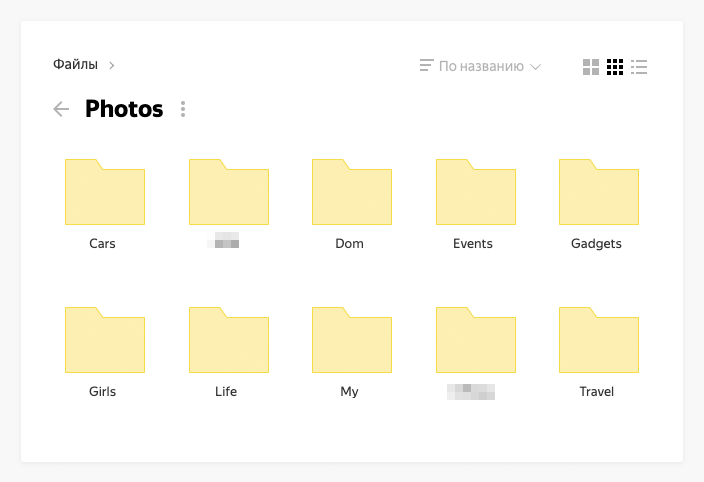
All photosets will be laid out in these sections. If you take many, many pictures straight, it’s more convenient to keep each section on a separate sheet (at the bottom of the table).
Important : try to avoid creating the “Other” category, since it is in it that chaos will arise that will collapse the universe. The maximum is “! Temp”, into which you will merge files for further sorting into other categories. - Name . Inside the category, each photoset has a name - you need to give names that will be easy to remember or find. 2 options are convenient here: alphabetically or in chronological order. I alternate between both options: it’s more convenient to use device names in gadgets, and a mask like “2018-03-08 - March 8” in events. If anything, there is always CMD + F.
- Where now . In this column, I indicate where the photos are currently stored - on the camera’s memory card, on the laptop, on the external drive or in the cloud. If the data location changes, the plate is updated. It is important to provide information about the photoset immediately, otherwise it will be forgotten later.
- Pieces before sorting . It’s not always possible (or rather, it never succeeds at all) to take immediately and sort gigabytes of RAWs, usually you simply drop them from the memory card. And here it is important to understand how many photos are in the photoset - in order to roughly estimate how much time will be spent on sorting and processing.
Life hack : it will be useful to know the average speed of sorting and processing photos, if you even bother with this. Just set the timer for 5-10 minutes and then see how much you managed to refine. It takes me 2-5 minutes on average to take a photo (provided that I know Photoshop hotkeys well). Further see p. 8. - Sorting and processing . Just two columns whose cells are painted either with green (= “Done”) or red (= “Not done”) color. You can add, for example, blue - if processing is not required. Such a color legend will clearly show what and in what condition it is. Optionally, digits can be displayed in it - the speed of work multiplied by the number of photos after sorting (see section 11).
By sorting, I mean the selection of the best frames (removal of repetitions and defects) for further processing, and by the processing itself - their path from the ravine to the jeep (which is not a shame to show to others). In the future, inside each folder will be precisely processed jeeps, and in the “Originals” subfolder there will be ravs and * .xmp-shks from them. - Copy in the cloud . Usually it makes no sense to upload an unsorted layer of photos into the cloud, this is a waste of time and place. There it makes sense to backup already sorted photos. And better - already processed. If I upload files to the cloud, I make a clickable link to the folder - so that I can go to the right place from the tablet in one click and not climb the online file manager (which, as a rule, slows down).
- Copy to disk . Clouds are considered reliable, but something inside suggests that it is better to have a backup also locally (at least for critical data). Well, or if we are talking about some kind of "sensitive" data that I would not want to upload to the Internet.
- Quantity, size . The number of photos after sorting, as well as the size of the space they occupy. An optional column, but now I’ll try to explain why I made it.
If I see a photoset with a green cell “Sort” and a red “Processing” - this means that I just need some free time for a rather dumb and monotonous mechanical work. Knowing the number and size of pictures, I can plan this lesson. For example, next weekend I have to drive a Peregrine Falcon from Moscow to St. Petersburg and vice versa, that is, I know that I will have a laptop and 8 hours without stable Internet (= excellent conditions for processing photos). We approximately estimate how many photos we’ll manage to process during this time and fill in the necessary photosets on the laptop. This is where knowledge of at least the approximate processing speed of 1 photo comes in handy. It takes me 2 to 5 minutes to take a photo, 8 hours is 480 minutes, which means it hardly makes sense to copy more than 300 photos to the laptop (which is about 6 to 9 GB).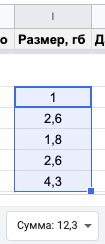
And then you just need to arrive early at the station in order to manage to take a table in the restaurant car =) - Date of shooting . An important parameter that is closely related to the next column.
- On the phone . It often happens that in addition to photographic weapons, you have to simultaneously shoot something on the phone. For example, if you take a picture of a dynamic scene (race), and ask a friend to shoot a video. Or if you are doing repairs and you have dirty hands - you don’t want to get the camera down, but just take it off to the phone. As a result, right now on a 128-gigantic iPhone I have 25,000 photos. Yes, there is a lot of bullshit, but enough is needed.
So that important phone photos do not live a separate life, it will be more correct to add them to the theme photoset folder. And just by date, looking for the right thing is the fastest (although the geotags here also help a lot). If there is a mark “Yes” in the phone, then I need to separately take pictures from the phone. If “No” - it means either they were not there, or they are already thrown off. - Marriage . This column is unlikely to be useful to you, but for myself I have decided to leave it for now. It displays what percentage of marriage from the photoset I delete - on average it is 50%, that is, as I said, my problem is that I make duplicate frames. On the whole, I don’t see anything wrong with that, I don’t feel sorry for the shutter count =) but for me it’s a kind of annoyance that I see every time I go to the tablet and every time I think, "learn to take pictures, pump up knowledge and skills." One day, I’ll go in for psycho!
- Draft and post . In case I need to write something about the photographed object (for example, a review of the device, of which there were a lot in my profile), then first I create a draft in Google Dox, the link to which I attach to the word “Here”. Green color - draft completed, yellow - in progress, red - not yet taken. The same with posts - adding a link to a post allows you to go to the desired post in one click, without any googling there.
It is immediately clear in what condition all publications are, what is the size of the “technical debt”.
Clickable:

Actually, such a tablet came out from me =) Pretty massive, but I made it for myself. If you liked my train of thought, then grab and adapt to your needs, add-remove.
Optionally, you can summarize the weight of all photosets, and count% of the occupied space on the media of a known capacity (a kind of progress bar).
Speaking of media.
At first, I only stored files on the laptop, but the place quickly ran out. I bought an external disk for 2.5 "- it died relatively soon due to my fault, since I constantly carried it with me in my backpack and once I didn’t save it.
I decided to try Ya.Disk, I bought 1TB - it seems to be convenient in general, but at the same time a lot of inconvenient: download and download speed, cost, privacy (all of a sudden a beta version of the new algorithm will consider my photos invalid and erase the whole account?) and much more.
Therefore, in the end, I settled on the version of symbiosis: I took two stationary disks and left the subscription in Ya.Disk active as a transit point and a spare wheel. Those “insensitive” data that could potentially be needed in the very near future fly away into the cloud - for example, photos of a device to be written about, or photos from children's events that are to be shared with other parents (the presence of a DSLR automatically dooms you to this function in kindergarten and school). On disks - everything that has no place in the cloud.

He took two 3.5 "Seagate Ironwolf as a stationary drive at the beginning of the year - a series of disos specifically for NAS-s. In this line there are models from 1 to 14 TB - 1 and 2 TB are not serious, for 6 and more - a little expensive. I stopped on the model 4 TB each - at first I thought I would make 8 TB JBOD of them, but then I figured it out and realized that I hadn’t done so much = yet) and finally stuck it together in raid 1 so that I wouldn’t bite my elbows for sure. little noise, do not heat up much, with a speed of more than ok (although I didn’t even make accurate measurements).

1TB on Ya.Disk costs 2000 ₽ per year, that is, 4 TB will cost an annual 8K (life hack: if you have a Y. Plus subscription for 1500 a year, there will be a 30% discount on Y. Disk), from the pluses you can add a place to a couple of clicks. 4 TB Seagate Ironwolf cost 7K apiece (I managed to grab 6 each ), but then you bought them once, put them in and forgot - they can autonomously rustle somewhere in the closet and not ask for money with an interval of a year.

For the sake of interest, I looked at the rates at Cloud@mail.ru - 1 TB costs from 699 ₽ per month! ) That is 8400 per year. 4 TB - from 2690 ₽ per month (32K per year).
I still have enough 4 TB for photos with my head, but if you are editing a video, then there will be few. In general, consider it yourself for your tasks =)
An important point that should be taken into account in the calculations. Recently, I talked with two wedding photographers - they said that they are trying to send a photo to the client within a month (this is already with retouching). Then they store the photos for a couple of months, and then mercilessly delete them, leaving only a couple of photos for the portfolio from each photoset (and the source for them, in case someone has to prove something, both of them happened). At first I thought about this approach: “Hmm, maybe well, what the hell ?! After all, the truth is, why keep all these photos of other people's weddings and gadgets if you will never watch them? ". Wait for the magic " what if they come in handy "? If in the last year you did not have such an attraction, then believe me, it will not come in handy. But then I thought that there is still a difference between my own and someone else’s - yes, you won’t see family photos and videos now, but it will be very nice to see them in 5-10-15 years. And here you understand that it is better to stock up on free space.
Browser Lifehack
I use Chrome and it has a convenient bookmarks bar (CMD + Shift + B). Create a bookmark of the table with the files, rename it - give the name:

(uh, Habr does not support emoji, I had to insert a picture). If there are a lot of bookmarks, you can do it with a separator, I like this one - “⬝”. With it we get such a beauty:

The end
I have been using this tablet for about six months now and in general I like everything about it, I'm already used to filling it out while the files are copied. Therefore, I propose not to waste time trying to convince me =) But at the same time, I understand that she is from the Stone Age and in it, it is possible (but not possible, but sure!) There is much to improve or automate (for which need more knowledge and time). Collective mind, let's think together, how can this be improved / redone / optimized, achieving better results with a minimum of effort? Any suggestions are welcome.
Well, or maybe you have your own secrets of
I hope it was useful =) Good luck!
Only registered users can participate in the survey. Please come in.
Where is better to store photos?
- 5% Locally on PC 57
- 12.3% In the cloud 138
- 6.7% On the external drive 76
- 17.5% On a Separate Home Server / NAS 196
- 57.6% In several places at once 644
- 0.6% Other 7
What format do you take pictures in?
- 21% RAW 217
- 51.4% JPEG 529
- 27.5% RAW + JPEG 283
Are you organizing your photos?
- 45.8% Yes, everything is systematized 476
- 25.7% I systematize only the selected 268
- 28.3% No, everything is in one pile 295
